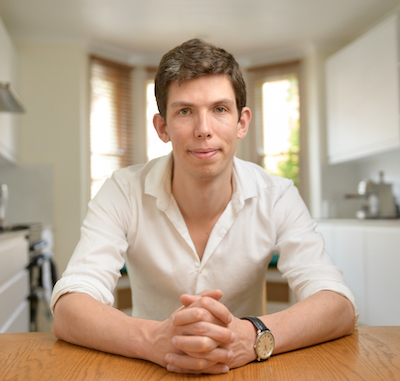
A short introduction to the work of James Maynard
This is an easy introduction to the work of James Maynard, you can read more of the mathematical details in this article.

James Maynard (Photo by Ryan Cowan, used with permission)
James Maynard, a mathematician from the University of Oxford, has won one of this year's Fields Medals at the International Congress of Mathematicians. The Fields Medal is one of the most prestigious prizes in mathematics. It is awarded every four years "to recognise outstanding mathematical achievement for existing work and for the promise of future achievement". Up to four mathematicians up to the age of 40 are awarded a Fields Medal each time.
Primed for number theory
At the heart of number theory lie prime numbers - those numbers that are divisible only by themselves and 1. Because of this indivisibility they are often described as the atoms of number theory. Every other whole number can be "made" from these atoms in the sense that you can write it as a product of primes. The number 24, for example, can be written as
24 = 2 x 2 x 2 x 3,
and the number 110 can be written as
110 = 2 x 5 x 11.
In a similar way, every other whole number can be written as a product of primes.
The twin prime conjecture
We've known for thousands of years that there are infinitely many primes (see here for the simple and elegant proof) but there is no discernible pattern in how they are sprinkled along the number line. "Typically as you go down the number line the gaps between prime numbers get bigger," says Maynard. "But the [twin prime conjecture] is saying that even if the gaps get typically bigger, occasionally you get these gaps where the primes are very close together. Understanding the gaps between prime numbers is fundamental to understanding the distribution of the primes."
See here for all our coverage of the ICM 2022 and the prizes awarded there.
Apart from the number 2, all the other primes are odd numbers, so the closest two prime numbers could ever be (once you get past the number 2) is separated by a difference of two. At first it's easy to find these pairs of primes that are as close as can be, called twin primes: 3 and 5, 5 and 7, 11 and 13 all separated by 2. But this gets significantly harder the further you go up the number line. Mathematicians believe there are infinitely many pairs of twin primes which is known as the twin prime conjecture.
The twin prime conjecture is one of those famous problems in number theory that are simple to state and have fascinated mathematicians for hundreds of years and yet a proof still remains out of reach. After centuries of effort there was a big breakthrough in 2013, when Yitan Zhang proved that there were infinitely many pairs of primes that are separated by 70 million. "For mathematicians this was absolutely a huge breakthrough as this was the first time we had [a proof of gaps of] any finite number," says Maynard. "70 million is much bigger than 2 but it's a lot smaller than infinity."
Zhang's breakthrough involved sieve methods, which are ways of filtering numbers in your proof. "Sieve methods are a mathematical tool for translating some information you understand about numbers to create some information you'd like to know," says Maynard. Zhang's breakthrough involved proving very strong mathematical results that were needed as an input for the sieving method.
Maynard's approach was different: "Rather than improving the input to the method I changed the method itself. It became more efficient in turning one type of information into another and it meant that we needed much weaker inputs to get a result about boundary gaps between primes." With this new method he dramatically reduced the gap from 70 million to just 600. And after a flurry of collaborative work with a group of mathematicians, we now know there are infinitely many pairs of primes separated by a gap of just 246.
Even after such dramatic progress a proof of the twin prime conjecture still remains elusive. Work continues, but often involves taking new approaches. An example is Maynard's work proving there are infinitely many primes without certain digits. It's hard to know at this stage when the twin prime conjecture will finally be proved in full, but we came away from our discussion with Maynard feeling optimistic. "We're still one big idea away from proving the twin prime conjecture, but maybe we're only one big idea away."
Receiving one of the biggest prizes in mathematics is a huge honour, Maynard also finds it daunting, and slightly surreal. "In some ways it's intimidating thinking of my name on this list of legends of mathematics from the past. People I looked up to, when I was a kid and thinking about mathematicians," he says. " It's certainly quite surreal in that way."
About this article
Marianne Freiberger and Rachel Thomas, Editors of Plus, interviewed James Maynard in June 2022.
This content was produced as part of our collaborations with the London Mathematical Society and the Isaac Newton Institute for Mathematical Sciences. You can find all our content on the 2022 International Congress of Mathematicians here.

